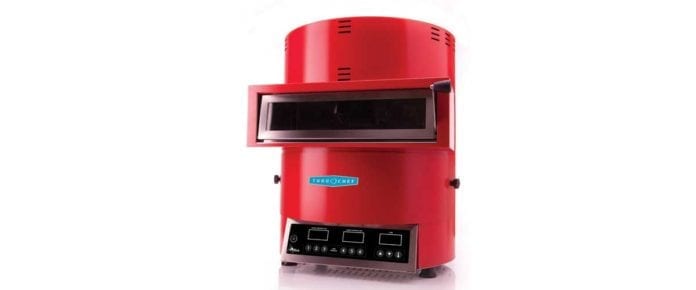As technologies evolve, footprints shrink and efficiency becomes the order of the day, foodservice operators are turning their attention to maximizing their equipment investments. Whether itÕs adding intelligence to the kitchen, speeding up production or implementing the newest technology, those investment decisions are changing with the times. Here are five top-of-mind trends from foodservice consultants, operators and chefs.
When it comes to selecting appliances, Doug Feltmate, director, Food Services and Hospitality for WSP Canada Inc. in Ottawa says it’s all about digital controls and smart cooking. “Digital is having the biggest impact and changing how we cook,” he says.
The digital revolution has an impact across the board — from ovens and ventilation systems to warewashing and refrigeration units. Intelligent controls can monitor temperatures, adjust settings, send alerts or simply collect data. “Automatic adjustments never happened with analog controllers,” Feltmate says. “With today’s controllers, monitoring is all pretty simplified.”
These kind of smarts can deliver a wide range of advantages, such as the ability to adjust cooking temperatures for consistent results; or reduce risk by alerting someone when temperatures are moving outside of accepted health-safety requirements or whether a maintenance call is needed. “Even ice machines are getting smarter by maximizing harvesting with the least amount of water,” Feltmate adds.
Digital sensors on warewashing systems can play a key role in energy-savings programs, he adds. “It used to be you had to throw lots of hot water at dishes because there was no way to control things accurately. Digital gives you the ability to bring water consumption down by huge amounts. If you see what is consumed today versus 15 years ago, the difference is off the charts. That’s a result of digital controls and programming.”
Remote diagnostics is another benefit, whatever the equipment, he adds. “Sensors allow technicians to run diagnostics and in some cases fix the problem without having to pay a visit.”
The good news is the vast majority of new appliances now have built-in controllers, Feltmate notes. “Virtually every manufacturer is making digital controllers today. It’s all part of how manufacturers are improving competitiveness.”
Smarts are one thing, but speed is becoming an equally compelling driver behind equipment purchasing decisions. The appetite for accelerated cooking technologies is evident in the fact that both TurboChef and MerryChef are experiencing growing demand, Feltmate says. “Even fine dining is using them.”
It’s not just the heating side of the picture. Feltmate reports that one of the biggest growth areas has been blast chillers. That’s in large part because accelerated chilling helps operators stay within HACCP (hazard analysis and critical control points) guidelines. “Every restaurant will have one in time because vendors such as American Panel and Alto-Shaam, among others, are now offering reasonably priced models. They’re not just for institutions anymore. We’re at the point where they should be mainstream.”
Even pizza ovens are going the accelerated route. John Higgins, director of George Brown Chef School in Toronto points to the TurboChef Fire Oven that can cook a fresh 12″ or 14″ pizza in 90 seconds. “These ovens can do great things.”
One of the biggest trends Higgins sees is the growth in multi-function systems on a smaller scale. “Today it’s all about versatility without taking up a large footprint. Not everyone has $20,000 to spend on a piece of equipment. I’ve even seen smaller footprint dishwashers in Europe.”
The school recently purchased a small footprint combi-oven measuring 12″ by 20″ by 2″. “It’s great because it doesn’t take up much space. And if you want to move them around you don’t have a large investment in electrical wiring.”
Not only do these units cost less than a full-size item, they also offer enough functionality for a smaller operator to do everything from slow roasting and baking to dehydrating and steaming.
Although larger induction systems are not hitting mainstream kitchens as widely as expected, portable induction systems continue to grow, Higgins says. “They’re perfect for catering operations because they’re inexpensive and easy to move.”
Another increasingly popular multifunction kitchen appliance device with a miniature footprint is a thermomixer, Higgins adds. “They provide consistent product and flavour profiles and can do all sorts of functions, including cooking soups, sauces and custards.”
It’s impossible to discuss trends without looking at what’s happening on the tablet front; whether it’s for POS systems, menus, back-end operations or streamlining table service. According to Alex Barrotti, founder and CEO of TouchBistro in Toronto, a developer of iPad POS systems, uptake is unprecedented. “I’d says we’re installing in up to 240 restaurants every month. The restaurants we work with average three iPads per site. The largest one has 159 in a single location.”
Tablets (for the most part, iPads) are commonly being used for menus, wine lists, ordering and in some cases, payment processing. The advantages are many — from convenience and lower equipment costs, to synchronized reporting and remote access, to a wide array of management functions (e.g. scheduling, menu changes, etc.).
The turning point in its increased use was the drop in price of commodity tablets, Barrotti says. “Now they’re commonplace and can be much cheaper than traditional POS terminals by thousands of dollars. With Wi-Fi so ubiquitous — all you need is a router, which you can get for about $200 — all the tablets can communicate with each other. You can even take it home and check on what’s happening at your restaurant.”
Ziv Schierau, senior account executive at OpenTable in Vancouver, agrees tablets are becoming ubiquitous in foodservice. “People are also using them to manage reservations and wait lists, as well as seating flow.”
The ability for staff to move with the tablets creates more efficient communications and workflow, he adds. “It’s about increasing efficiencies so you can provide a better and elevated dining experience.”
Helen Langford, senior vice-president for Missis-sauga, Ont.-based Boston Pizza, says when it comes to investing in its operations, the focus is on anything that can support optimization. “In other words, any technology that can take away the manual duties of people in the kitchen so you can focus on the guest experience.”
Restaurateurs are discovering there are significant advantages to be gained from connecting back-of-house systems all the way through to inventory management, order placement and processing and everything in between, she says. “Any system that can help you integrate can take guesswork and labour out of the equation. Scheduling, for one, is a huge thing. With the right programming you can input total production in hours, measure performance and staff appropriately.”
She contends that technology integration also reduces dependence on external resources. “It’s very liberating to have all your data coming in from multiple systems because it gives your people the capabilities to solve their own problems.”
She reports that Boston Pizza is working on wide-scale integration throughout its operations. The next order of the day is online learning platforms. “That’s how we plan to deliver training. We’re also exploring integration opportunities with appliances. There are some really cool things out there. The key is pacing and sequencing it right. You can’t introduce it all at one time.”
Written By: Denise Deveau
Volume 48, Number 10


















